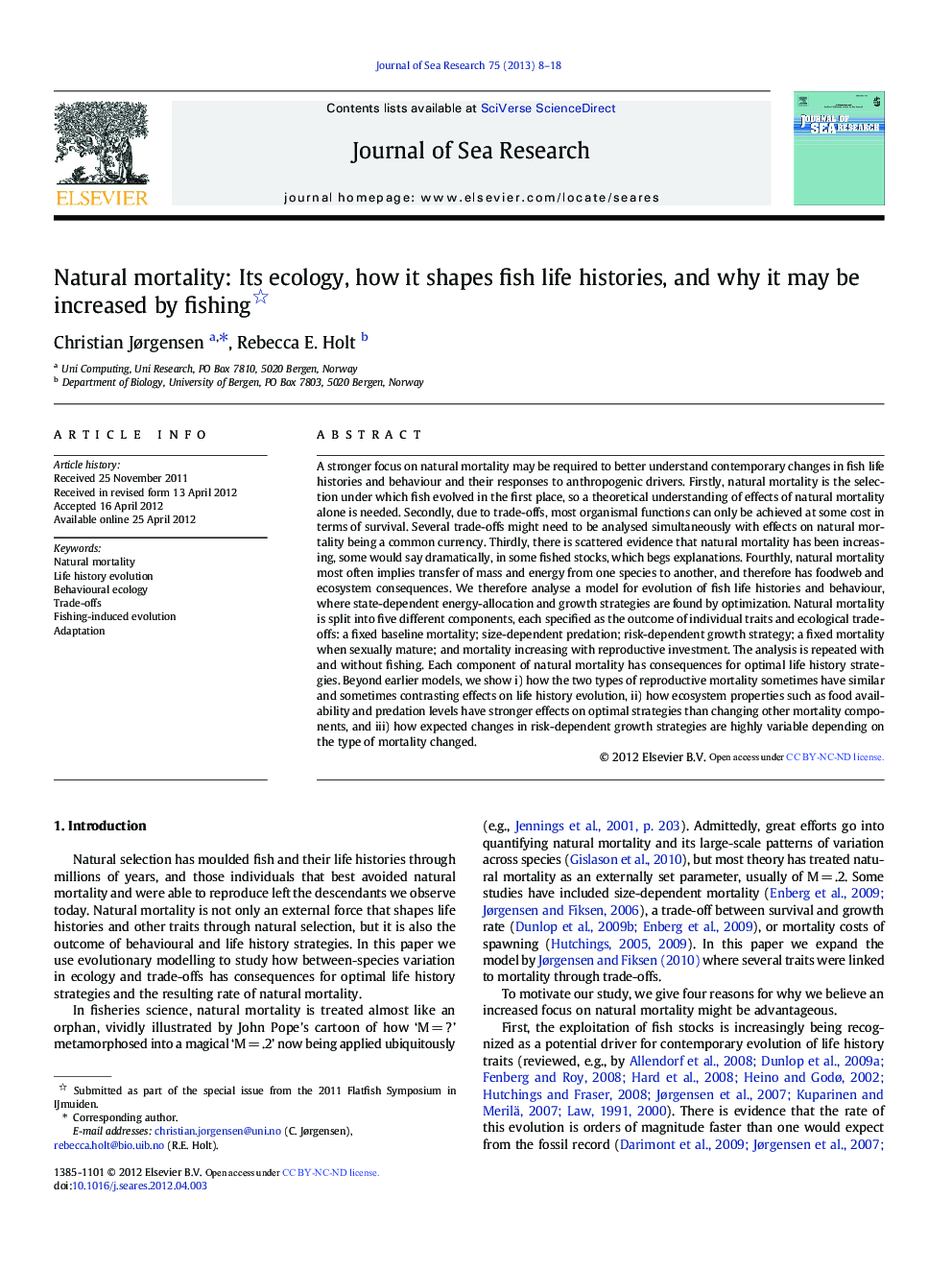| کد مقاله | کد نشریه | سال انتشار | مقاله انگلیسی | نسخه تمام متن |
|---|---|---|---|---|
| 6387521 | 1627499 | 2013 | 11 صفحه PDF | دانلود رایگان |
A stronger focus on natural mortality may be required to better understand contemporary changes in fish life histories and behaviour and their responses to anthropogenic drivers. Firstly, natural mortality is the selection under which fish evolved in the first place, so a theoretical understanding of effects of natural mortality alone is needed. Secondly, due to trade-offs, most organismal functions can only be achieved at some cost in terms of survival. Several trade-offs might need to be analysed simultaneously with effects on natural mortality being a common currency. Thirdly, there is scattered evidence that natural mortality has been increasing, some would say dramatically, in some fished stocks, which begs explanations. Fourthly, natural mortality most often implies transfer of mass and energy from one species to another, and therefore has foodweb and ecosystem consequences. We therefore analyse a model for evolution of fish life histories and behaviour, where state-dependent energy-allocation and growth strategies are found by optimization. Natural mortality is split into five different components, each specified as the outcome of individual traits and ecological trade-offs: a fixed baseline mortality; size-dependent predation; risk-dependent growth strategy; a fixed mortality when sexually mature; and mortality increasing with reproductive investment. The analysis is repeated with and without fishing. Each component of natural mortality has consequences for optimal life history strategies. Beyond earlier models, we show i) how the two types of reproductive mortality sometimes have similar and sometimes contrasting effects on life history evolution, ii) how ecosystem properties such as food availability and predation levels have stronger effects on optimal strategies than changing other mortality components, and iii) how expected changes in risk-dependent growth strategies are highly variable depending on the type of mortality changed.
⺠Natural mortality emerges from individual strategies for behaviour and life history. ⺠Ecological relationships, including anthropogenic change, shape these strategies. ⺠Fishing will likely select for increased natural mortality as an adaptive response. ⺠We show sensitivity to several trade-offs between mortality and life history traits.
Journal: Journal of Sea Research - Volume 75, January 2013, Pages 8-18
